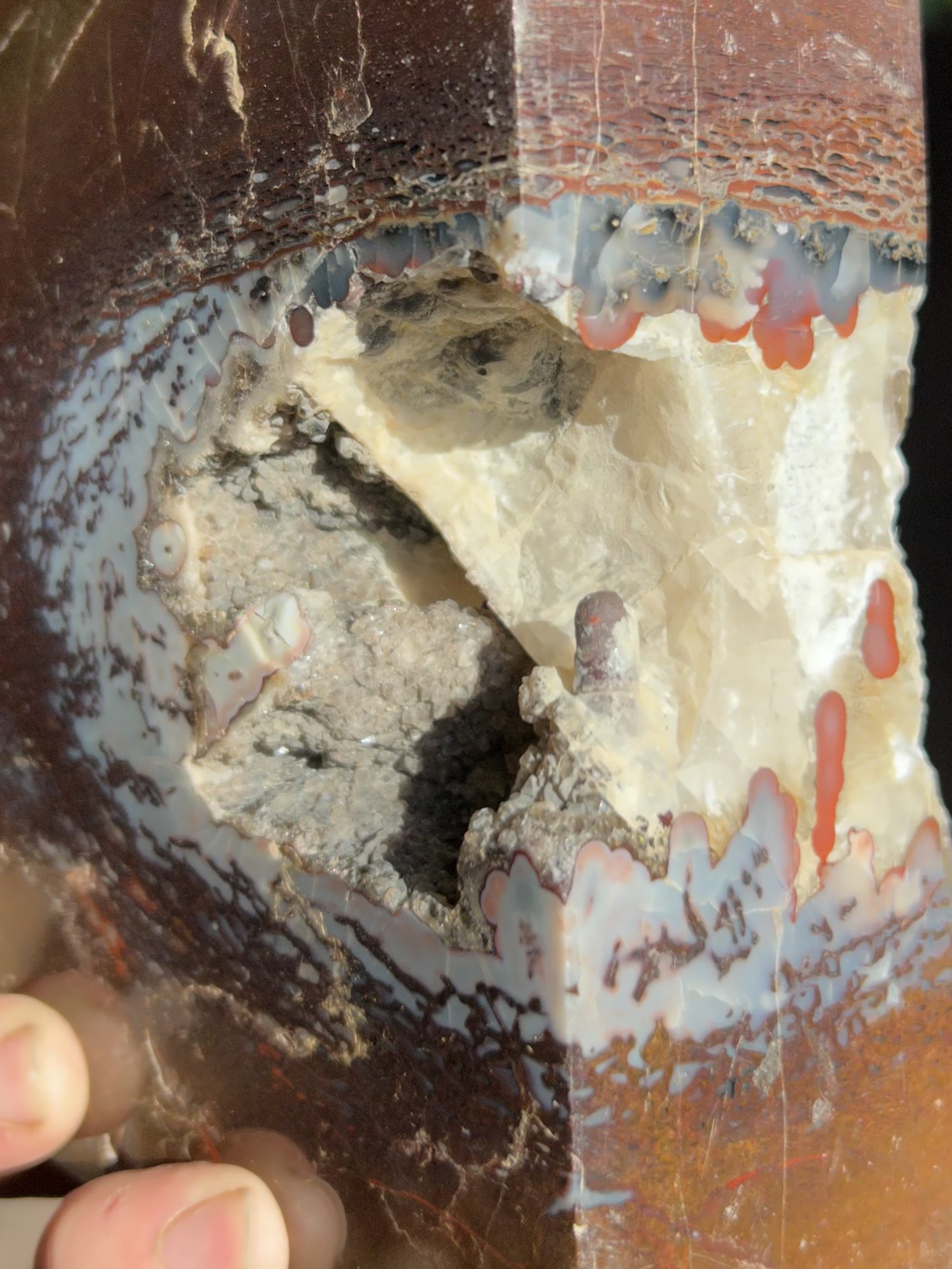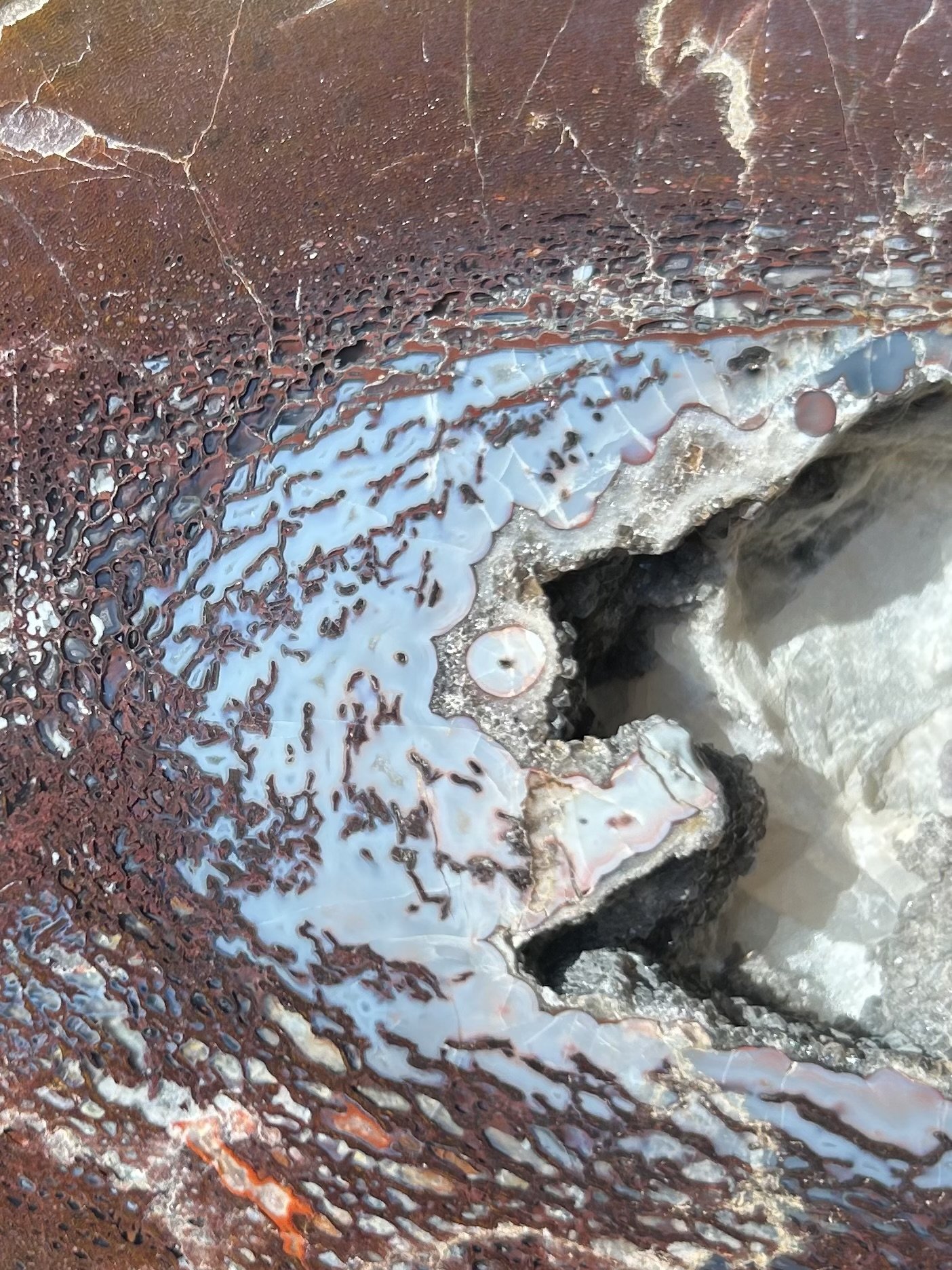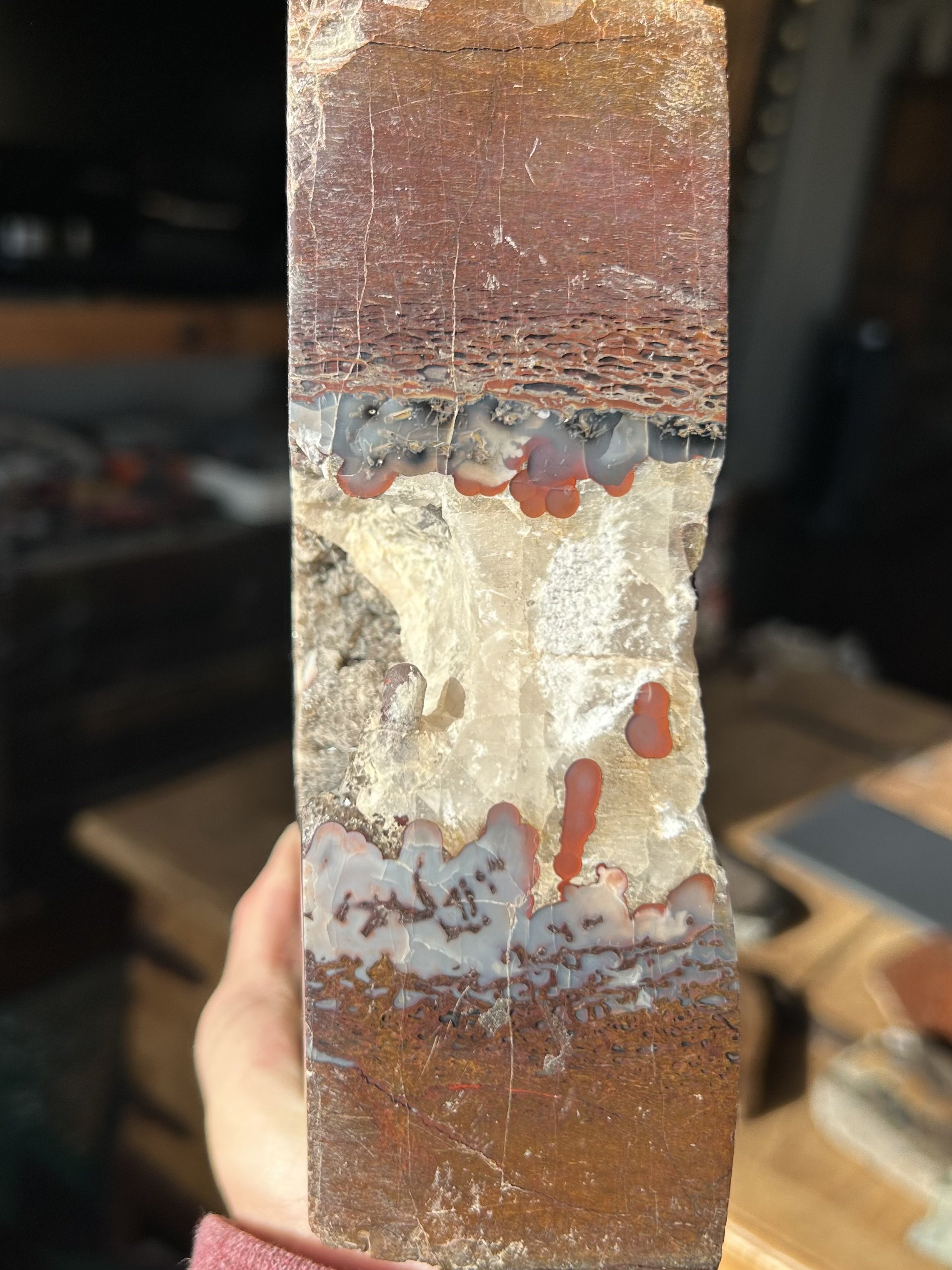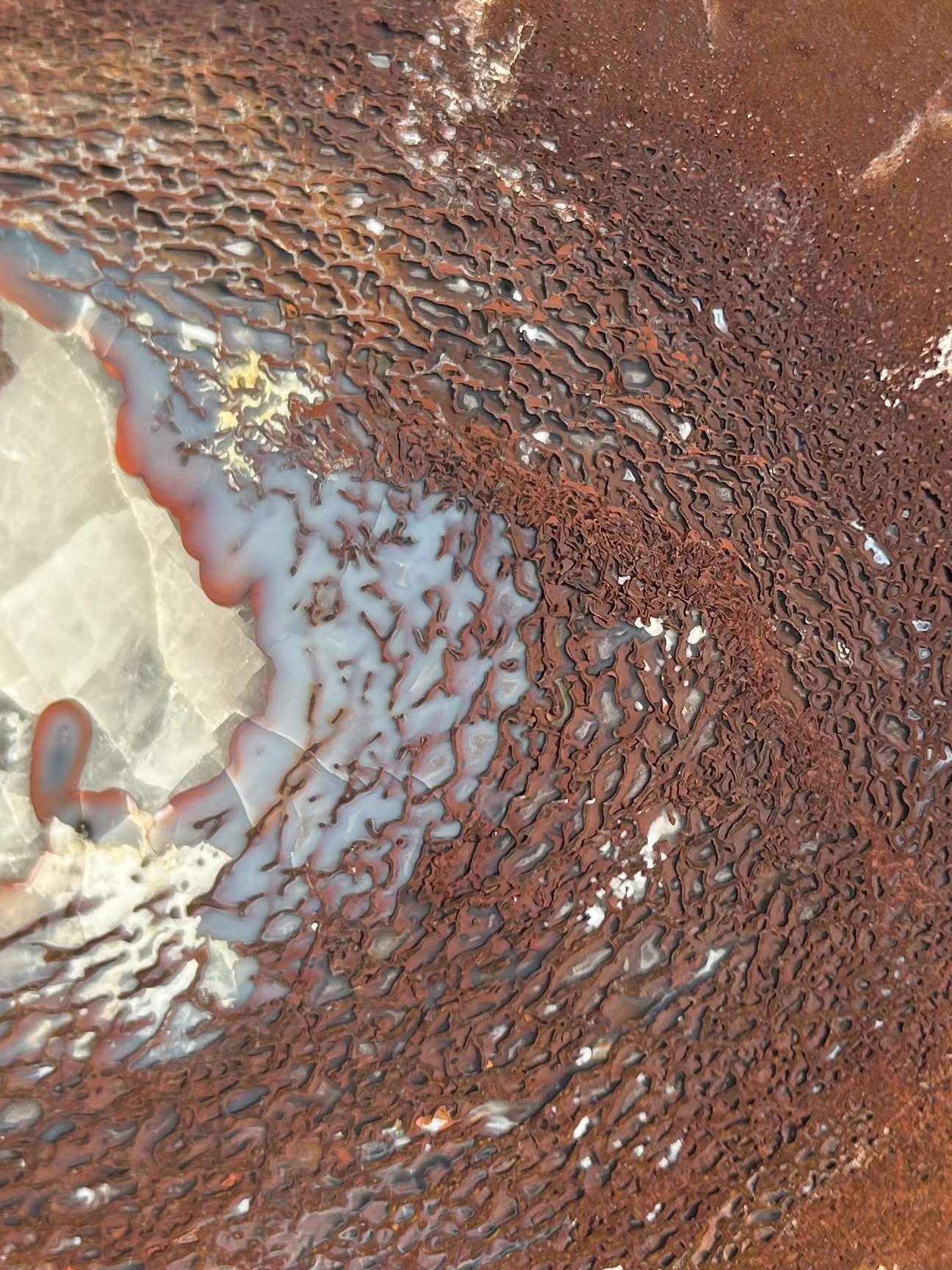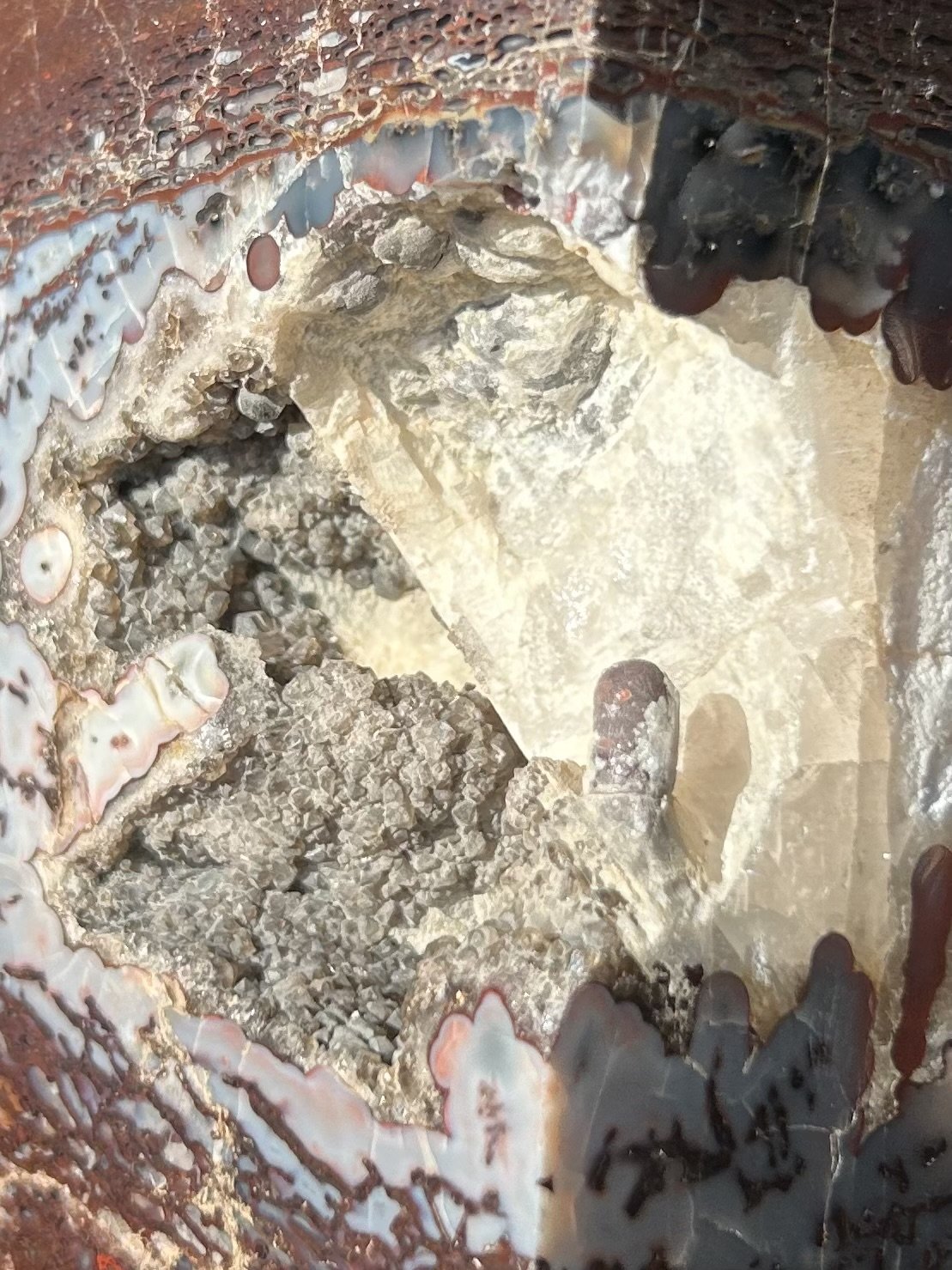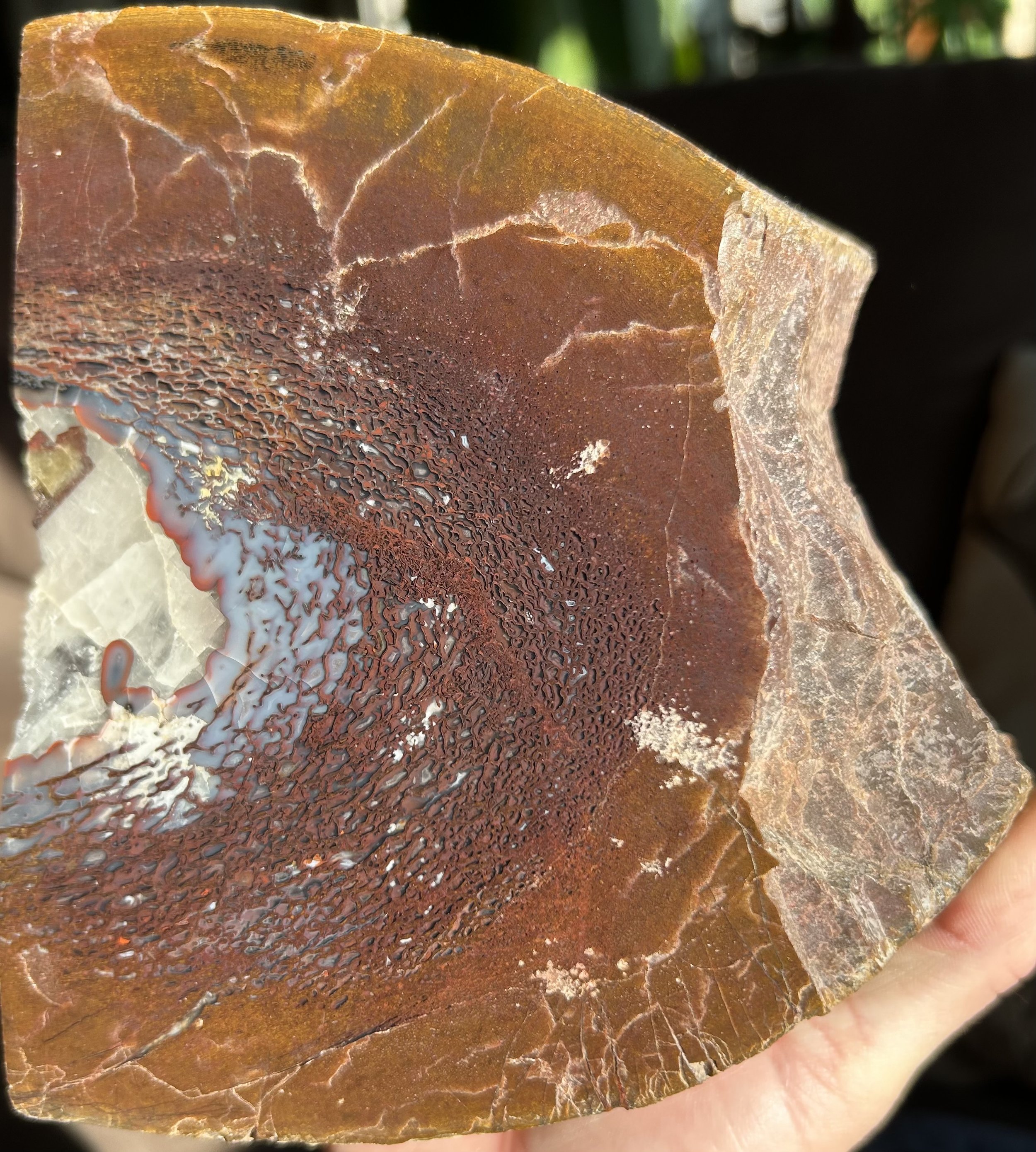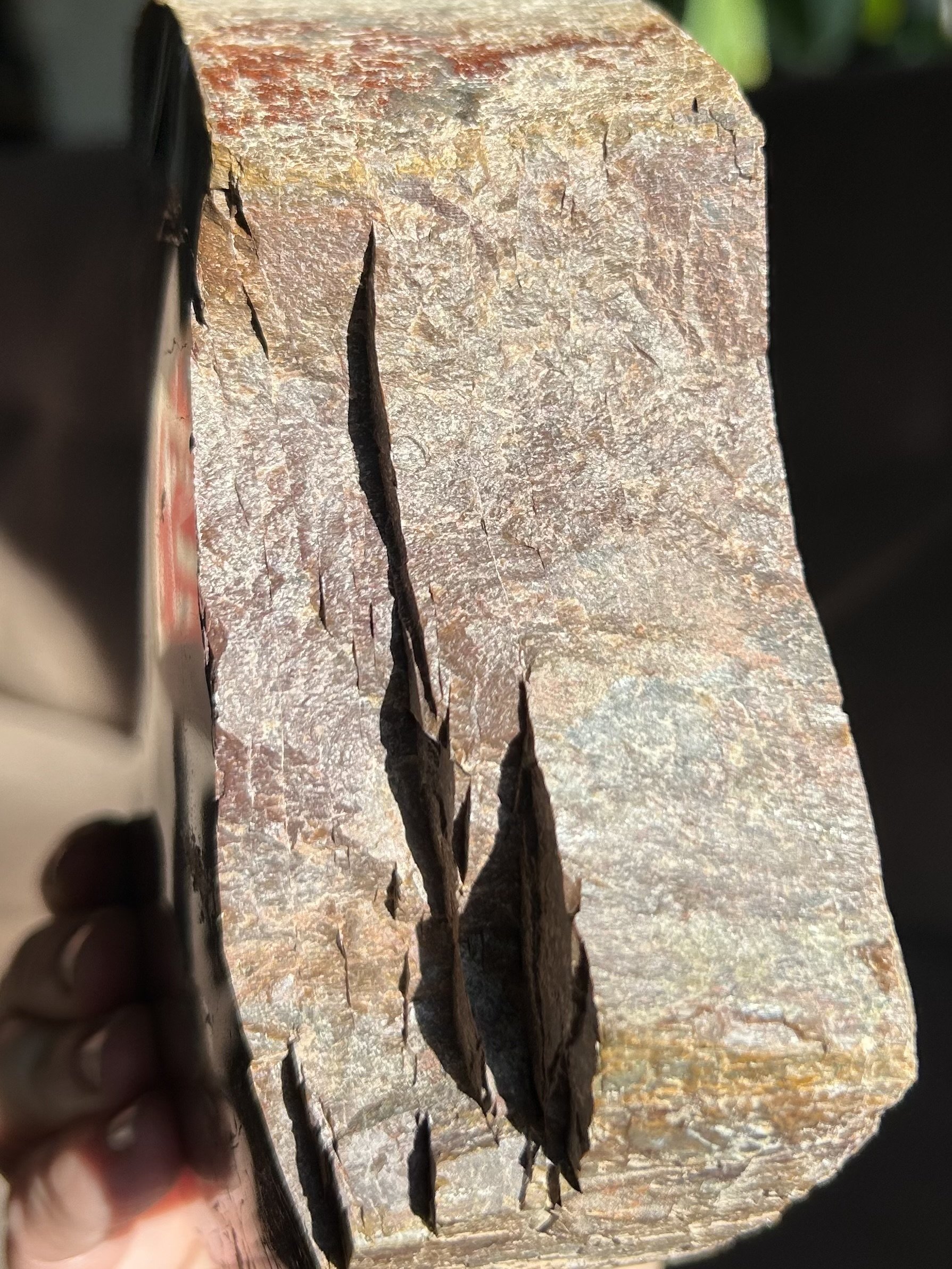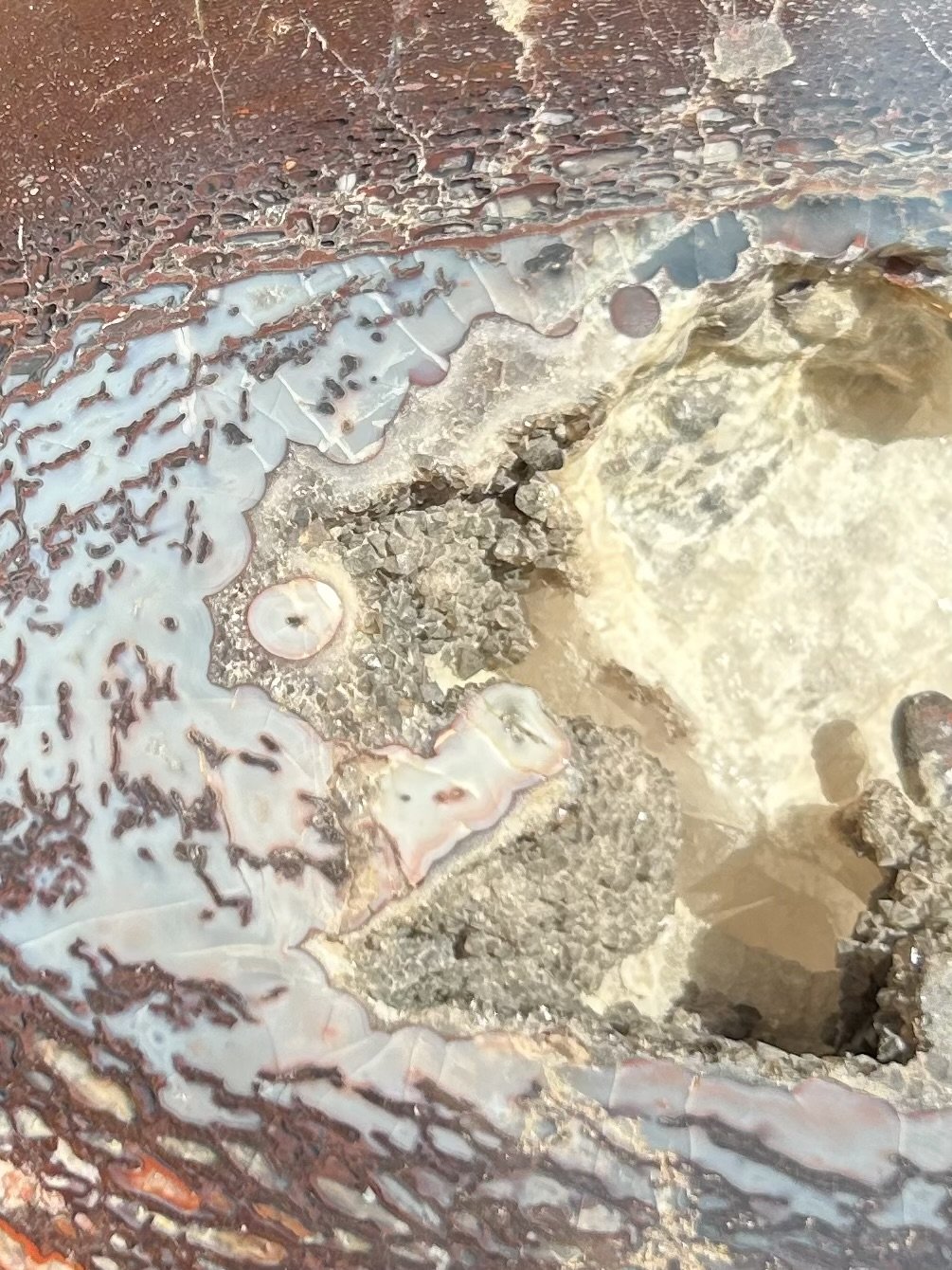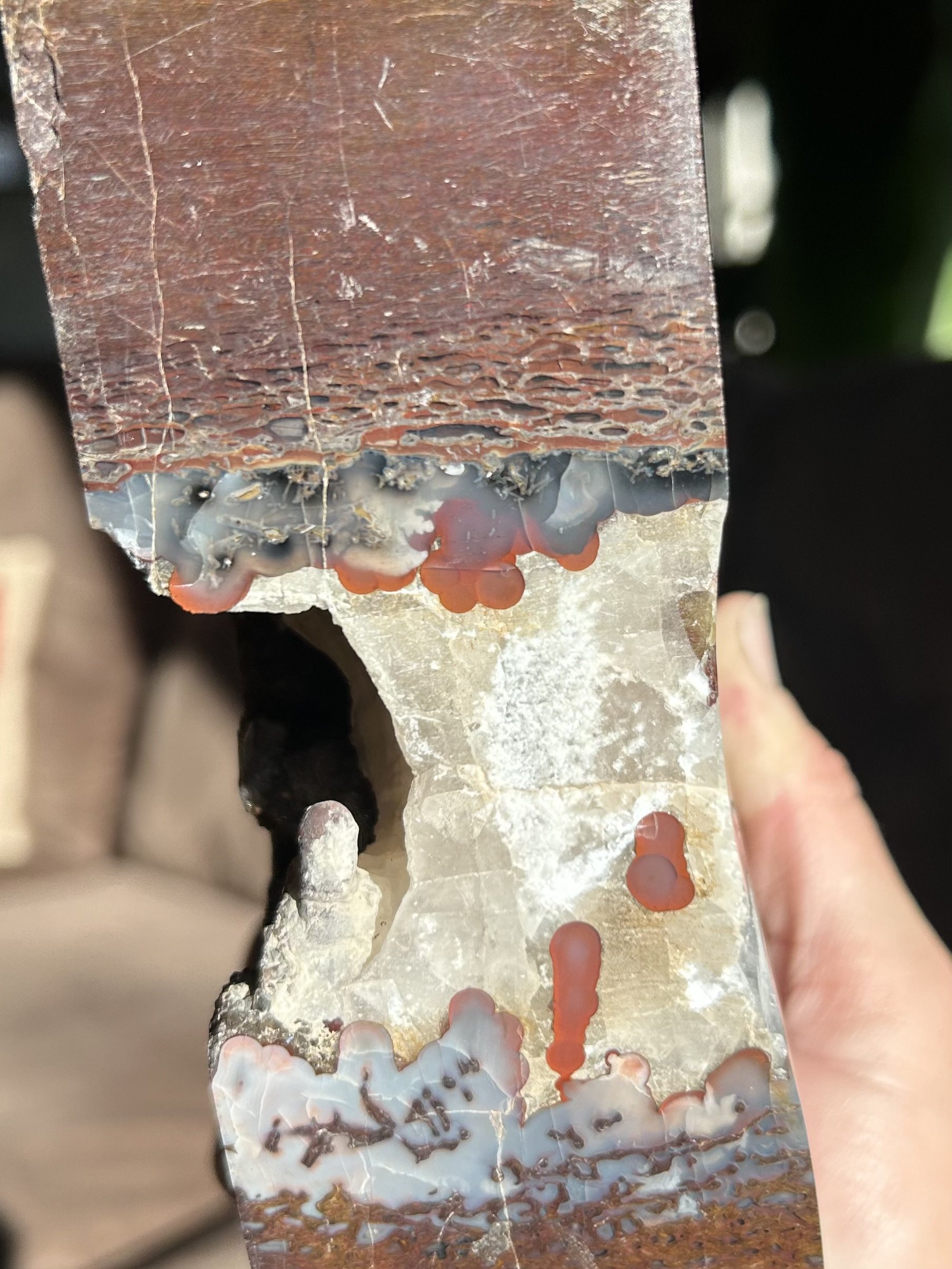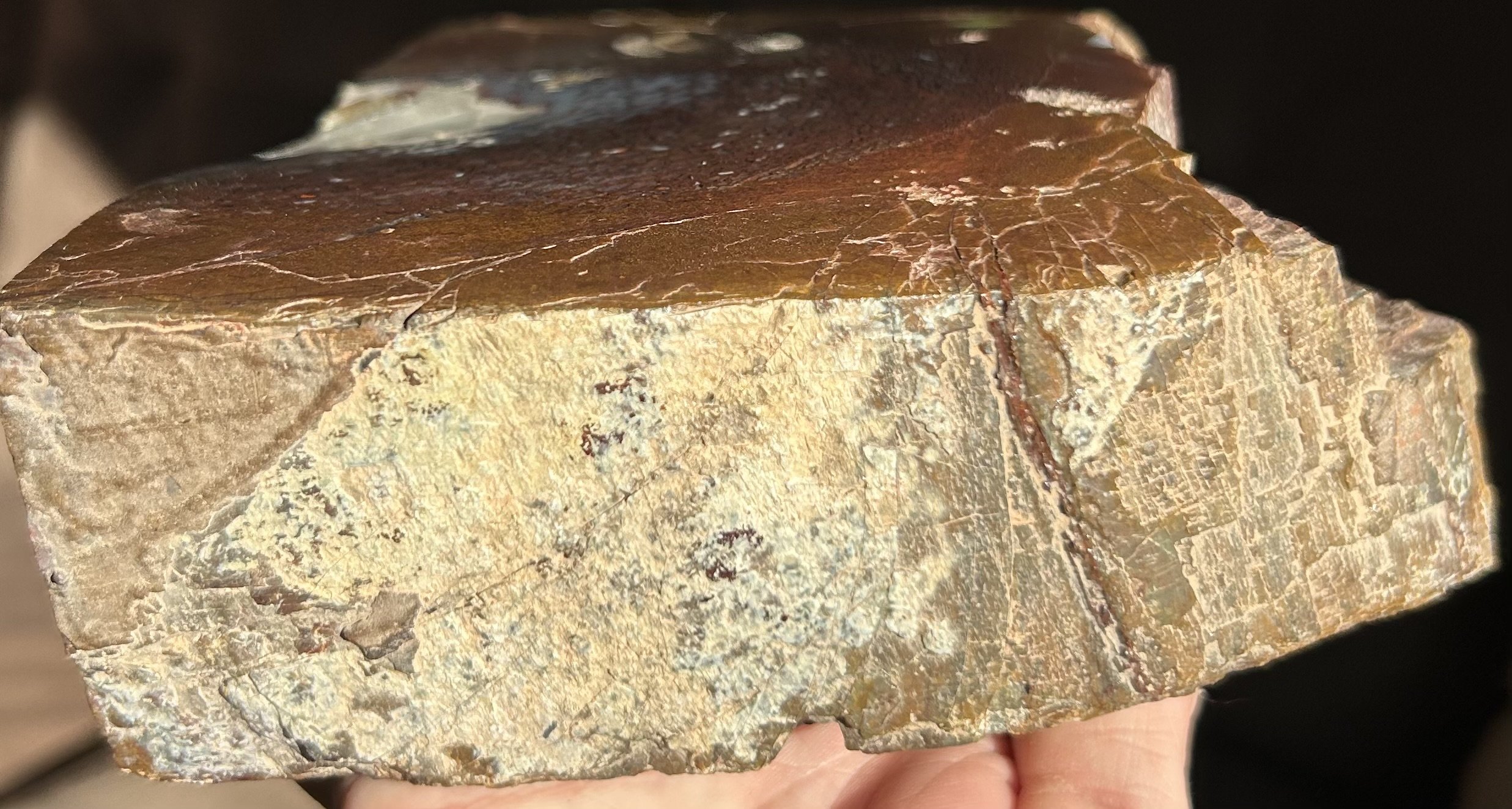Large Agatized Dinosaur Gem Bone - 5.6lbs
This is a piece of Late Jurassic aged, Agatized “Gem Bone / Gembone”, partially polished to reveal the wonderful internal cell structure. Agatized dinosaur bone is a rare form of fossilized dinosaur bone where the original fossilized bone has been naturally replaced with silica based compounds such as agate, jasper, chalcedony, or opal.
AGE/ERA
Jurassic 155 Million Years Old
LOCATION
Legally Collected on Private Land in Moffat, Colorado
FORMATION
Morrison
DIMENSIONS:
Length: 6”, Width: 5.5", Depth: 2”
Weight: 5.6 lbs
This is a piece of Late Jurassic aged, Agatized “Gem Bone / Gembone”, partially polished to reveal the wonderful internal cell structure. Agatized dinosaur bone is a rare form of fossilized dinosaur bone where the original fossilized bone has been naturally replaced with silica based compounds such as agate, jasper, chalcedony, or opal.
AGE/ERA
Jurassic 155 Million Years Old
LOCATION
Legally Collected on Private Land in Moffat, Colorado
FORMATION
Morrison
DIMENSIONS:
Length: 6”, Width: 5.5", Depth: 2”
Weight: 5.6 lbs
This is a piece of Late Jurassic aged, Agatized “Gem Bone / Gembone”, partially polished to reveal the wonderful internal cell structure. Agatized dinosaur bone is a rare form of fossilized dinosaur bone where the original fossilized bone has been naturally replaced with silica based compounds such as agate, jasper, chalcedony, or opal.
AGE/ERA
Jurassic 155 Million Years Old
LOCATION
Legally Collected on Private Land in Moffat, Colorado
FORMATION
Morrison
DIMENSIONS:
Length: 6”, Width: 5.5", Depth: 2”
Weight: 5.6 lbs
Agatized Dinosaur Gem Bone
Dinosaur Gembone from the Morrison formation of Colorado is either found as fragments on the surface from bones or partial bones that have long since been destroyed by exposure to the elements, or as broken, tumbled, chunks found in the event layers of the quarry. Determining the type of dinosaur these agatized bones come from is difficult in this formation, but can be possible to determine based on cell size and outer appearance of the bone.

